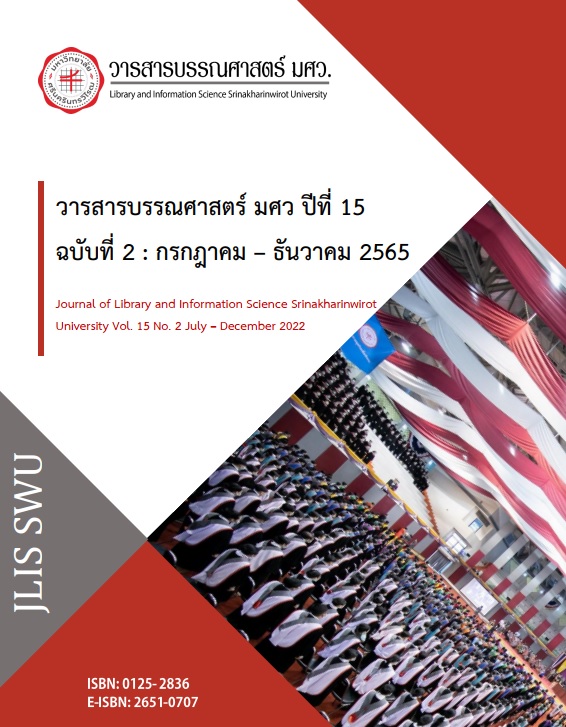The use and problems in using Cultural Heritage Information by the National Library of Thailand
Abstract
The purpose of this research was to study the use and problems of using cultural heritage information of the National Library of Thailand users, as well as to compare the use and problems in the use of cultural heritage information classified by age, occupation and educational level. by using quantitative research methods The sample group used in this research was 518 users of the National Library of Thailand and 12 branches of the National Library of Medicine using a landscape randomization method. The tools used for data collection were questionnaires. The statistics used for data analysis were percentage, mean, standard deviation. The hypothesis was tested using one-way ANOVA statistic and independent t-test. The results revealed that the use of cultural heritage information among users in general was at a high level. The objective is to find knowledge of things of interest and to increase knowledge for oneself. Choose digital information resources The language of information used is Thai. The content used is folk literature and literature. There is a way to search from information resource databases and other databases. available Use Internet Resources as well as using the service to answer questions and help with research as much as possible The overall cultural heritage information use problem was moderate. When considering each aspect, it was found that It has the most accessibility and search issues. When comparing usage and overall usage problems, it was found that users of different occupations have different usage and usage problems. While users of different education levels and ages are used differently. But there are no different problems in usingAdditional Files
Published
Issue
Section
License
Copyright (c) 2023 Faculty of Humanities, Srinakharinwirot University

This work is licensed under a Creative Commons Attribution-NonCommercial-NoDerivatives 4.0 International License.
Copyright Notice
Copyright of articles in the journal of Journal of Library and Information Science Srinakharinwirot University is the author's and the Faculty of Humanities, Srinakharinwirot University. All articles submitted for publication will be assessed by a group of distinguished reviewers. The Faculty of Humanities, Srinakharinwirot University and the editorial board claim no responsibility for the contents or views expressed by the authors of Individual articles. Copying is allowed freely, provided acknowledgement is made thereof, and within the scope of copyright law.



